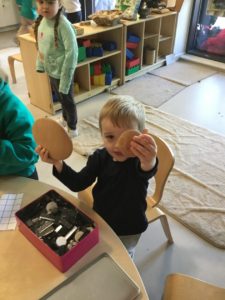Planting Bulbs – 24th to 30th October 2023


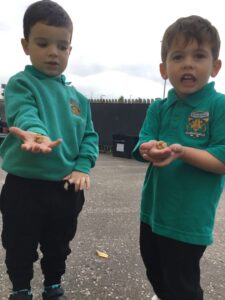

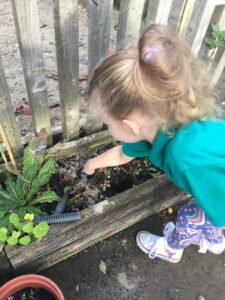






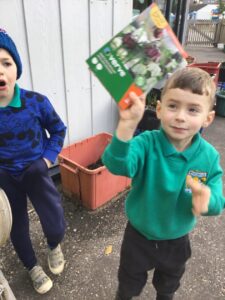
Scarecrow Design and Building: Wednesday 13th September – 3rd October


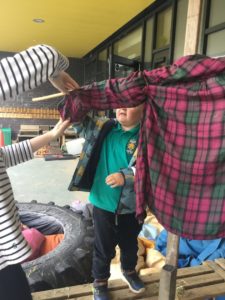


We have spent lots of time designing and building a scarecrow to place in our side garden. The children completed a homelink task to design one and this acted as inspiration for our final design. They then also explored the story The Scarecrow’s Secret, which discusses what makes a good design for a scarecrow along with why we build them.
“The other one doesn’t look like a scarecrow. It doesn’t have a face.” – M
“It’s to scare the crow birds away.” – N
Once the purpose and design had been discussed, we moved onto building the structure. The children used a real hammer and nails to make the vertical post which will hold the scarecrow up.
“You need nails to make it strong.” – L
”It needs to stand up.” – F
The children then had lots of fun stuffing the leggings, shirt and head with straw. We considered which materials to use and decided straw was light enough and good for filling the clothing.
“I know, we can use sticks in the head, or stones. No, that’ll be too heavy!” – R
“His arms are mine.” – J
We then decided what features the scarecrow’s face needed.
“Eyes. I got 2 eyes. One, two.” – E
“A nose. One, there.” (Points to own nose) – E
“It’s going to be a happy scarecrow with a happy mouth! A girl scarecrow, Cee Cee.” – J
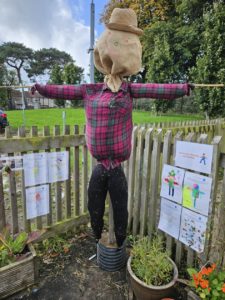

I enjoy experimenting with a range of textiles.
I can share their thoughts with others to help further develop ideas and solve problems.
I explore ways to design and construct models.
Working on my own and with others, I use my curiosity and imagination to solve design problems. EXA 0-06a
I have the freedom to discover and choose
ways to create images and objects using a
variety of materials.
EXA 0-02a
CCC05 – I can use a variety of materials to mark make.
CCC07 – I can use resources to build, construct and take thing apart.
More Seed Collection – Wednesday 6th September 2023





Weighing Tomatoes – Tuesday 5th September 2023





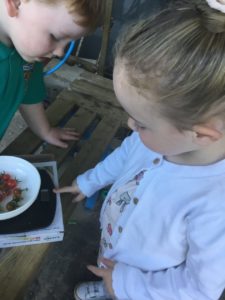
Seed Collection – Tuesday 29th August
Today we have been collecting seeds from the nasturtiums and the pansies. We looks at each type of seed and discussed their sizes.
“This is big (nasturtium) and this is little (pansy)” – R



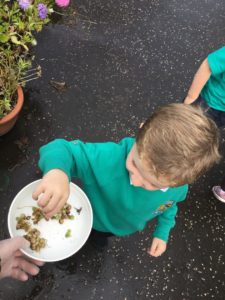


We have also collected the seeds from the sweet pea plants. The children identified the seeds as circles and they made a comparison between the pods which were ready to have their seeds harvested and the ones still ripe.
“They brown.” – E
”crunchy.” – H
The children also attempted to count the seeds we collected.
”2, 4, 5!” – A
“1, 2, 3, 4, 5!” – E
”Baby one!” – A





(MNU 0-01a) (CCC06d) (CCC06f)
22/8/23 – *New Term * Carrot Picking and Pumpkin Counting
Today we have been exploring our pumpkin plants and have discovered that we have lots of pumpkins growing. The children described them as “baby pumpkin”, “mummy pumpkin”, “big”, “little” and “tiny.” We also counted how many we had.
“1, 2, 3, 4, 5!” – B
“Four, five!” – A
We also picked some carrots by pulling them by their green tails.
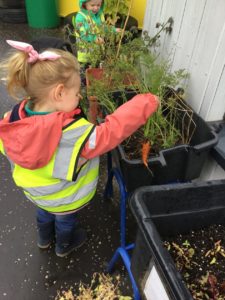




Once inside the playroom, we washed the carrots and categorised them by “big” and “small”.
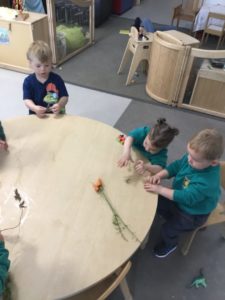

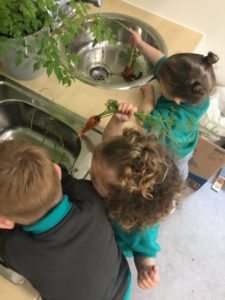
(MNU 0-01a) (MNU0-02a) (CCC06b) (CCC06f)
Herbs and Playdough – 12th July 2023
Today we picked some of the herbs to use with our playdough. We used scissors and our fingers to pick the leaves of the mint and rosemary.




Picking Carrots and Making soup – 10th July 2023


Today we pulled out some carrots we have been growing in the garden. The children took note that some carrots were easier to pull out than others: “Maybe the carrot couldn’t come out. It too big, got stuck.” – L
We also noticed that our pumpkin is getting bigger.



After washing the carrots we sat them on the table and counted how many we had. We also explored their sizes and compared them to one another.
“1,2,3,4,5,6,7,8,9,10,11,12!” – H
“So how many do we have?” – Adult
“We have 12!” – H
“This one is bigger than that one.” – C compares 2 carrots.
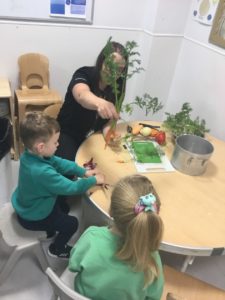
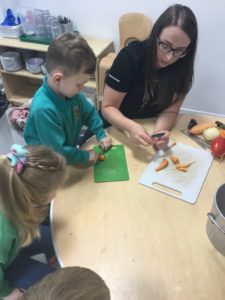

Once exploring the carrots, the children helped to incorporate them into a meal. They chopped up the carrots under close supervision along with other vegetables and made soup.
“We making vegetable soup to make F****** feel better!” – E
We sampled the soup at lunch time and compared it to the one the kitchen staff had provided for us.
“That’s different. It’s got bits in it.” – F talking about our soup.
Measuring Pumpkins and eating raspberries – 6th July 2023
Today, we noticed that one of the pumpkin flowers has started to grow a pumpkin. We got out a measuring tape to measure its size. F. S placed the tape at the top and we looked at the number the bottom of the pumpkin reached.
”That’s a two!” – F
”No! It’s a three!” – O

We also picked more spring onions.
“Sarah that so big!” – H
“I got a baby one.” H with a small one.

The raspberries were ripe and we tried those too!
“Yuck!” – C
“Can I get another one?” – H


Planting Beetroot – 21/06/23
Today we have been planting beetroot with the 2 year olds. We now have an empty container now that the potatoes have been harvested so we chose to put beetroot in its place. The children filled some of the container with more soil and then sprinkled their seeds on the surface.



“It red and pink. Me got a wee big one.” – E
“Big one too!” – AR
“Just hide them and seeds go away.” – E
“They seeds. Yeah they gonna grow.”- I
Pulling and Counting Tatties – 20/06/23


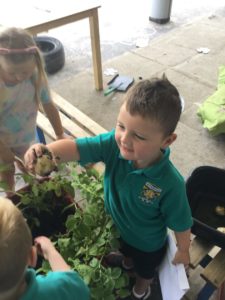

Today we dug up the potatoes using our hands. They have been growing for just over 3 months in a tub and now they’re ready to be harvested. At first, we could not find any and then we just found some really small ones. Eventually one of the children came across a big one and then as we dug deeper, we found lots!
“I got a baby one! It’s small! I’m going to wash it!” – O
“Look! A big one!” – JJ
“They were awesome! They were dirty. We found potatoes in the plant. Under the plant.” – SR
“They were dirty.” – K
“I found them inside a wee box. They were potatoes. We were digging.” – K


After harvesting the potatoes, we counted them. One of the children was in charge of taking the tally as we counted slowly. We ended up with 46 potatoes from 10 seed potatoes.
”We put10 potatoes in the ground to grow. Is 10 bigger or smaller then 46?” – Adult
“Smaller!” – B
“Are there more or less potatoes now?” – Adult
“More!” – O
Harvesting and Tasting Spring Onions – 19/06/23
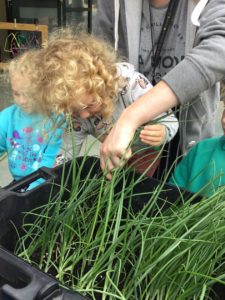
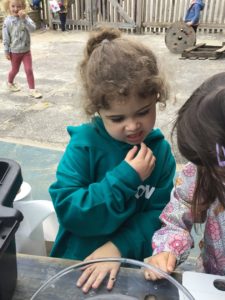



Today we have dug up the spring onions.
”I think we should pick up this one (points to one) because it’s the biggest.” – C
”I think it’s spiced.” – L
”They’re spring onions cause they look like spring onions.” – B
”That’s the tallest. tastes a bit spicy.” – S
“They look like grass.” – H

We also made a chart to discover how many children liked the taste of spring onions and how many didn’t by saying yes or no.
”Six is bigger.” – O
”So do more people like spring onions?” – Adult
”yes!” – O
Eco Project Day 3 – 14/06/23
Tuesday 13th June – Trying our Lettuce 🥬
We have been picking our home grown lettuce. We counted the lettuce heads and discussed that they lettuce have changed size and colour from being seeds. We also discussed how lettuce is good for our bodies.






“It’s lettuce. I eat different salad.” – H
”I think caterpillars have been eating lettuce. There’s a hole.” – A.Mc
“We makes salads, tomatoes and cucumber.” – K
”It’s healthy.” – B
”Crunchy.” – K
“Like broccoli.” – G
“Seeds! Farm!” – A
“That lettuce made me pick up that pink slide!” – G
“There’s 6!”
Monday 12th June – Checking on Potatoes 🥔
Today we checked the tub growing the potatoes. The potato leaves have started to wilt which is a sign that the potatoes are ready. We lightly dug at the surface until we found some but we noticed that they weren’t quite right.
“They too wee and too green.” – L
”Canny eat them. The potatoes are green.” – SR
While looking for the potatoes: “They’re hiding!”


Eco Project Day 2 – 07/06/23
Today in our session we hunted for insects in the older Primary children’s playground. There were many different bushes and flowers to search for different bugs, which we used magnifying glasses and cups to catch them and inspect them safely. We discussed what different insects need from their different habitats, and how they interact with their environment.
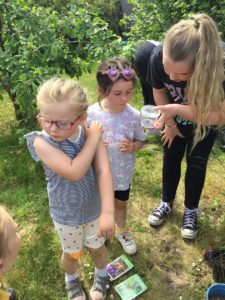





5th June 2023 – Strawberries 🍓
The two year olds have been exploring the strawberries we have been growing. The counting them and noticed how they were all different colours.



Eco Project session 1 – 01/06/2023
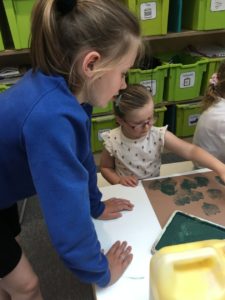





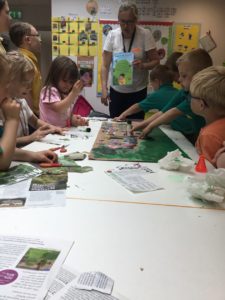







Checking on the plants – 10/05/23




Pumpkins & Potatoes – 06/04/23




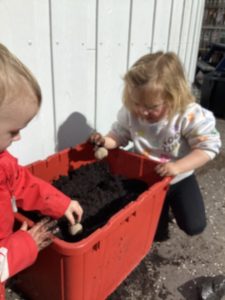


“We can’t eat these because they need water.” – C
Today the children had the opportunity to explore real flowers. They explored them by touching the different parts and smelling them. They also used scissors to chop up the flowers to investigate what the flowers looked like on the inside.





SCN0-03a
More Vegetable Planting – 03/04/23
Today the children have been planting more seeds to add to our produce garden. Together we have planted Brussel sprouts, tomatoes and spring onions. We have used some recycled materials in our planting such as old recycling bins as large planters (with old school chair legs to make them raised beds), plastic fruit containers as seed trays and used milk bottles as a watering can.


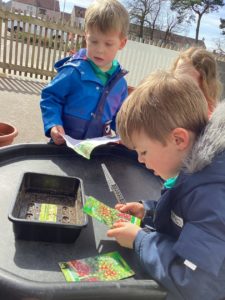




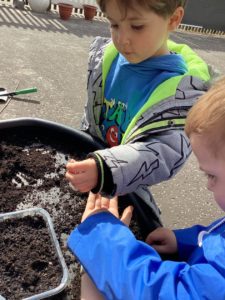
M adds: “To grow the plants. I put some things in the bin and mummy puts some in the recycling.

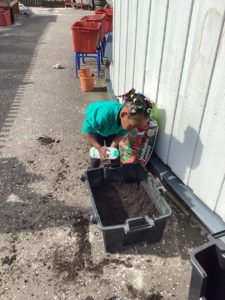
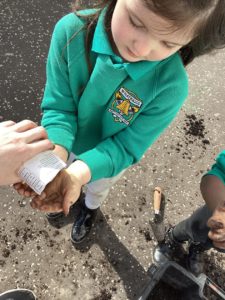

Measuring and Making Signs – 22/03/23
“Not that big.”- SR

 MNU 0-20a
MNU 0-20a
 LIT0-14a, LIT0-26a
LIT0-14a, LIT0-26aOur peas, broccoli, sunflowers and nasturtiums are doing well too and will be planted out soon!

Planting Sunflowers – Willow Room – 20/03/23
We have been planting sunflowers in the Willow Room. The children were able to follow instructions will planting such as “fill the pot”, “make a hole” and “put seed in”. The children were role modelled words such as “seed”, “soil”, “flower” and “grow” and some were able to repeat them. After planting, we watched a hyper lapse video of a sunflower growing to show the children what will happen to their seeds.
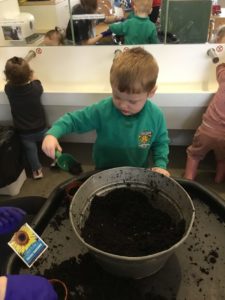



Planting Vegetables – week beginning 27/02/23
“We’re making plants and vegetables.” – A
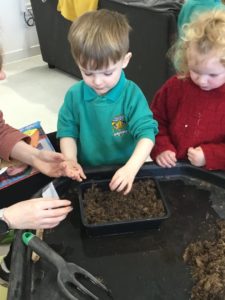





The Whatriggs Produce Garden


Someone You Love February Outdoor Stay & Play
- heart crafts for our tree of love
- playdough with hearts and roses
- Marion in Rainbow Cottage talking about ways you can encourage emotional regulation
- planting seeds for our garden- sweetpeas and pumpkins

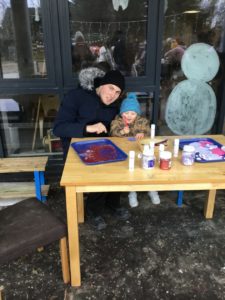




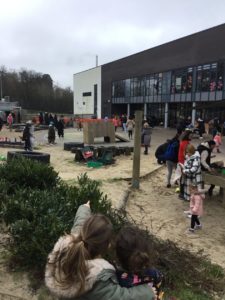
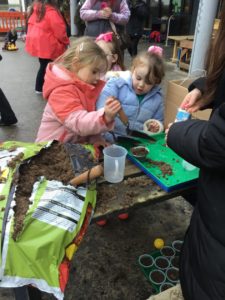
Outdoor Classroom Day
3.11.22
A massive thanks to everyone that came along to celebrate Outdoor Classroom Day with our stay and plays. This was a great opportunity to showcase our garden and the changes we have made to incorporate more of our Curiosity Approach journey (for more info on this, visit the Curiosity Approach section on our blog) as well as have parents/carers/family back for a visit once again!
I hope you loved the different stations on offer, like our:
- playdough
- mud kitchen with fresh lemons and flowers
- construction area with blocks, tyres, guttering
- cosy corner with books, beanbags and piano
- our castle and vehicle seating
We would love to hear your opinions on how this day went and any ideas or suggestions for future stay and plays or events in the garden.




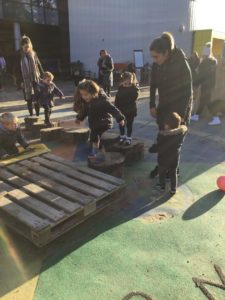






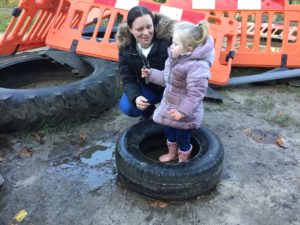


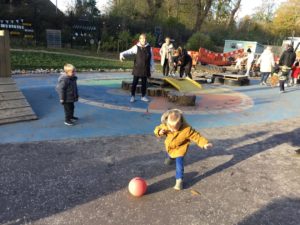
Maths Week Pictures
04.10.22
Here are some pictures from throughout Maths Week.
The children got many opportunities to explore and develop their mathematical skills such as;
- estimating
- number recognition
- using mathematical language such as bigger or smaller
- shape and pattern recognition






Maths Week 2022
16.9.22
We will be celebrating Maths Week Scotland in all four playrooms between 26th September – 2nd October. 🧮
The theme for this year is “Beauty in Maths” 🎨👩🔬
There will be activity bags each following a different theme that will make their way through the playrooms from Monday to Thursday. We will be looking at:
Shape 🔷🔵
Numbers 🔢
Measurement 📐
Symmetry 🦋
On the final day the whole centre will have the opportunity to take part in a group experience to explore and celebrate the beauty of maths together.
___________________________________________________________________________
Here is the link for more information on Maths Week Scotland
https://www.mathsweek.scot/about

There are lots of in-person and online events planned to celebrate Maths Week, with exhibitions in museums across Scotland and online competitions running. The big family weekend is Saturday 1st and Sunday 2nd October, why not have a look and see if there is something you fancy visiting in our local area or beyond:
https://www.mathsweek.scot/news/maths-week-scotland-2022-family-events
14.9.22

Wellbeing
The Chief Medical Officer recommends
children under the age of 5 should
experience at least 180 minutes of physical
exercise every day and that should include
outdoor play. There is a saying ‘There’s no such
thing as bad weather, just the wrong
clothes’ The benefits to children’s learning
and development from being
outdoors mean we need to ensure
everyone has the right clothes to
enjoy.
‘Realising the Ambition: Being Me’,
Scottish Practice Guidance for early
years stresses the importance of
outdoor play and learning in all
weathers:
“Children flourish when playing outdoors in
all weathers. Feeling sun, wind, rain snow
and ice first hand is important as it connects
us as human beings to the planet we live on.
Being in nature stimulates the senses and
nurtures a sense of wonder and awe at the
processes of life. Outdoor environments can
offer different surfaces, different levels, lots
of natural features to explore, trees to climb
and bushes and shrubs to hide and build
dens in. Different natural spaces can
simultaneously ignite creativity and
imagination whilst fostering a sense of
wellbing and calm.” p.56.
CHECKLIST FOR OUTDOOR PLAY
*Ensure your child is wearing the right clothes
for the weather. Layers are great, they can be
added or removed to suit the conditions. A
waterproof jacket and wellies are essential.
Waterproof trousers or an all in one suit are
also useful.
*You can help your child develop self help skills
by supporting them to learn how to put their
outdoor clothes on independently.
*Bring a hat and gloves and wear warm socks in
the colder months.
*Old clothes are perfect for nursery, your child
needs to feel they can get messy if they want
to.
*It is useful to have a change of clothes available
when needed.
*If your child comes home a bit muddy or messy,
ask them what they were doing. Try and
encourage them to enjoy outdoor play and
learning.
Children are curious about the environments surrounding them, even before they are born.
solving skills from an early age. Children constantly explore cause and effect through their play.
Numeracy is not just about being able to count. It is about developing number sense which encourages creativity of thought and it allows children to interact with the world around them. Number sense can be used to understand everyday activities. Being able to recognise that symbols have different meaning in different contexts and the ability to quantify e.g. understand the two-ness of 2, is an important life skill.” (pg, 74, Realising the ambition, 2020)


Books to support your child’s numeracy skills 📚📖
16/2/21
- The very Hungry Caterpillar, by Eric Carle 🐛

-
Ten Little Monsters, by Mike Brownlow 👹

- One, by Kathryn Otoshi 1️⃣

- My Granny Went to Market, by Stella Blackstone 👵

-
- Adding up your shopping to ensure you have enough money with you and understanding the value of coins and notes.Doggies, by Sandra Boynton 🐕

26/2/21
Why is Numeracy in the early years so important 🤔?
Numeracy is key to developing a huge range of life skills, and is the basis of future learning across a wide range of subjects, helping children to understand the world around them.
Numeracy can be found in almost every aspect of every day life!
- Having an understanding of numbers and value for bills.

- Being able to use and unerstand units of measure for every day tasks such as, DIY, cooking, baking, gardening etc
- Having an understanding of routine and time in order to ensure you turn up on time for appointments, get to work on time, understand bus time tables and opening hours for shops.
When you take time to think about it maths is everywhere and is so important in our day to day lives.
1/3/21
- Adding up your shopping to ensure you have enough money with you and understanding the value of coins and notes.Doggies, by Sandra Boynton 🐕
Tips for helping your child to develop an understanding of numbers and counting.
Counting can easily be incorporated into most daily activities (eg count the biscuits/blocks/crayons), but there are many other ways to focus on this skill:
- Sing songs – lots of songs involve counting, eg Five Little Ducks, Ten Green Bottles. Music can be very effective in embedding learning, especially in the early years
- Read books – there are plenty of books that support number learning, have a look above for some good suggestions!
- Play board/card games – any game that involves rolling dice and counting spaces (eg snakes and ladders, ludo) will help children learn their numbers. Other games such as dominoes are also great for number recognition, developing 1-1 correspondence, where a child can recognise that two dots, means 2.





